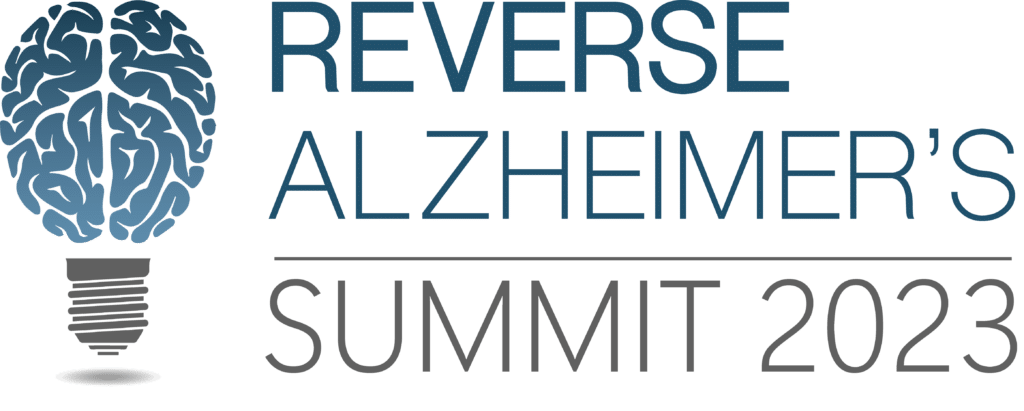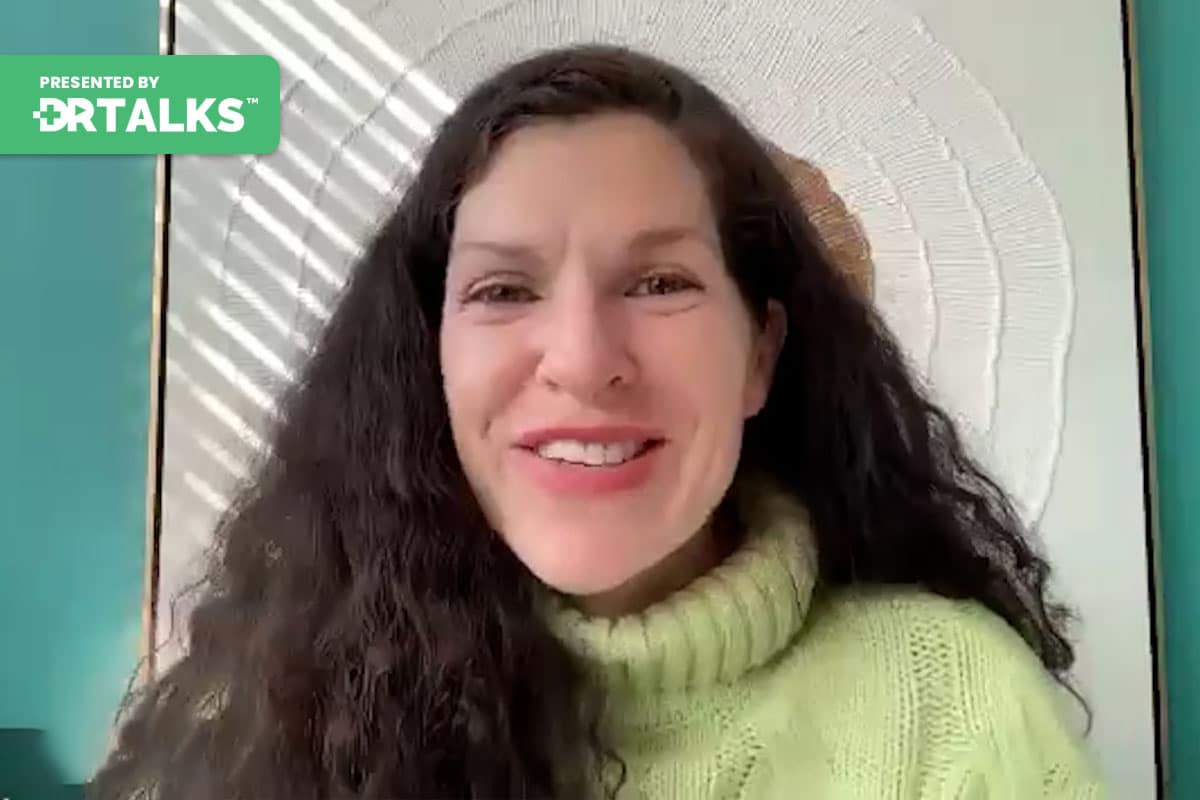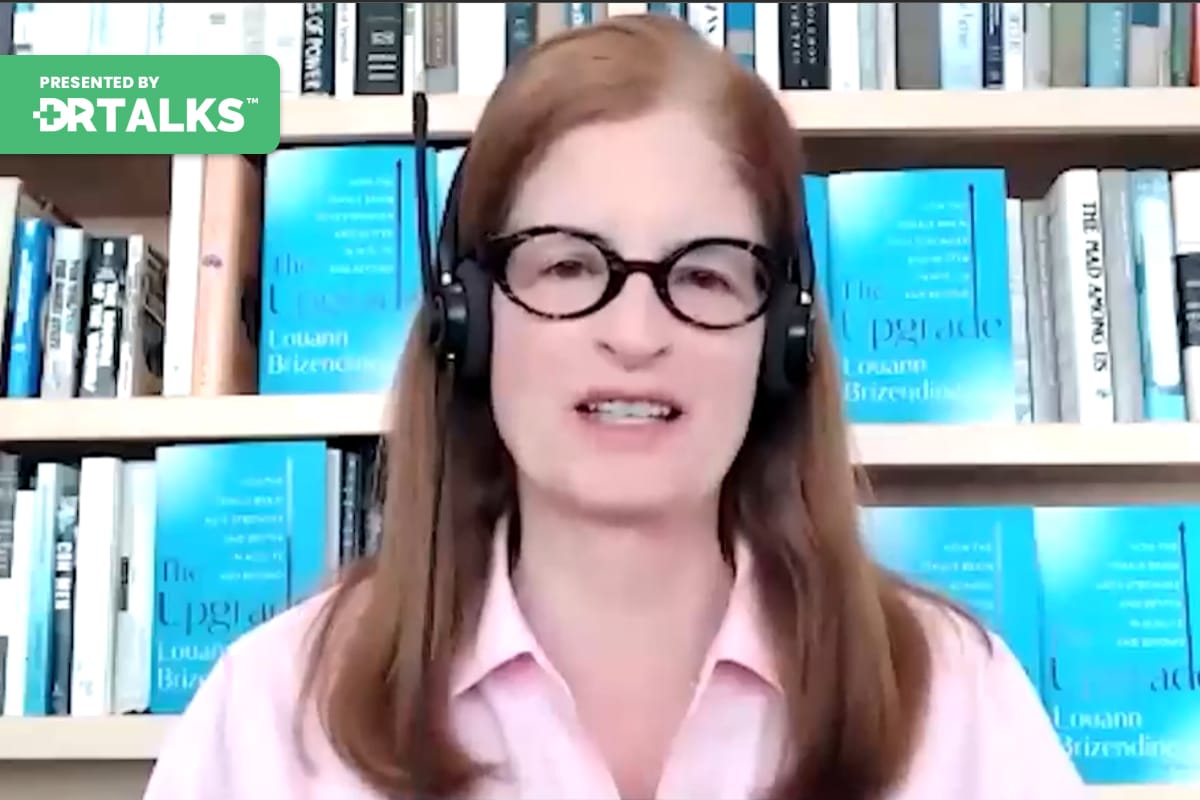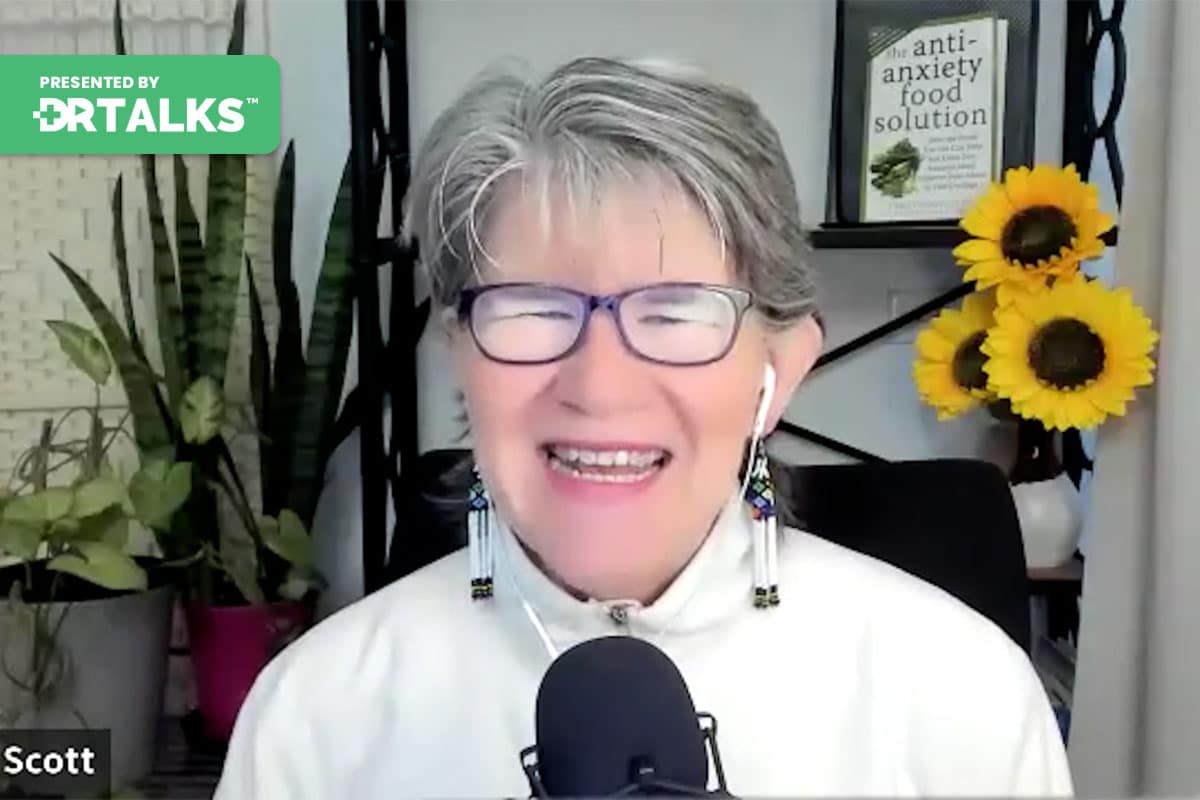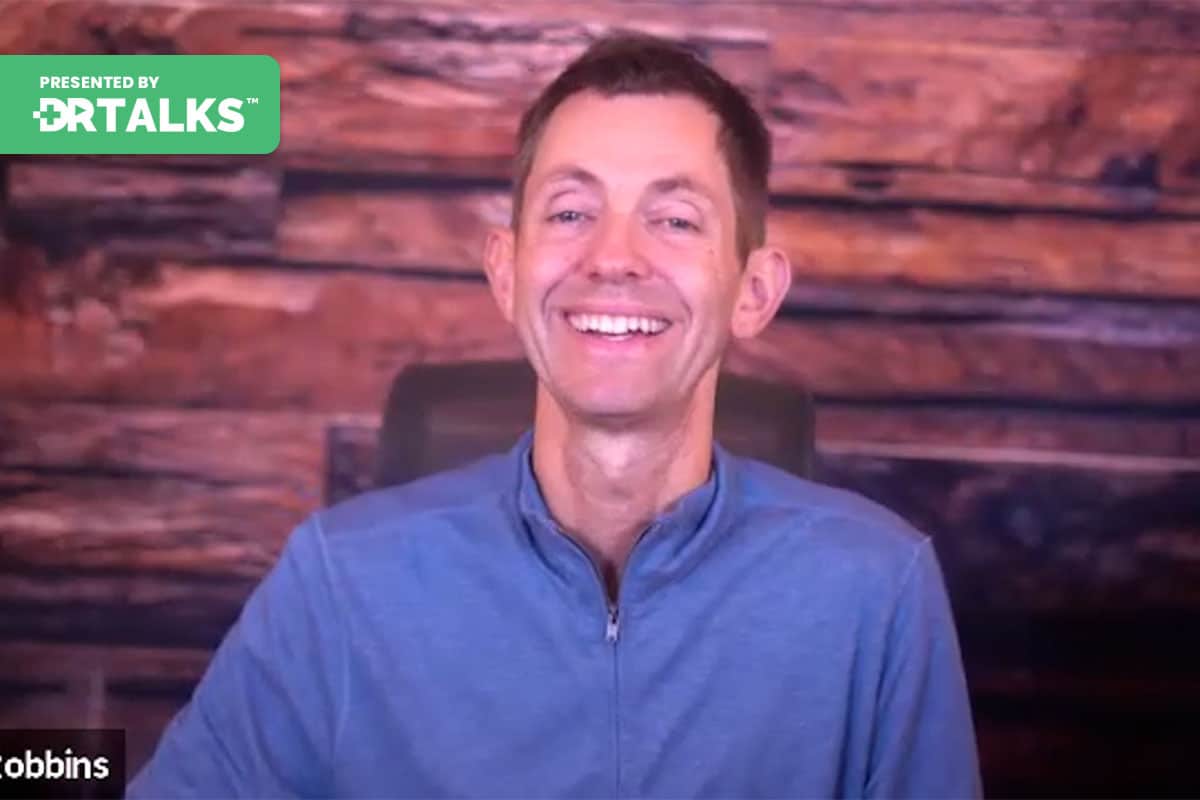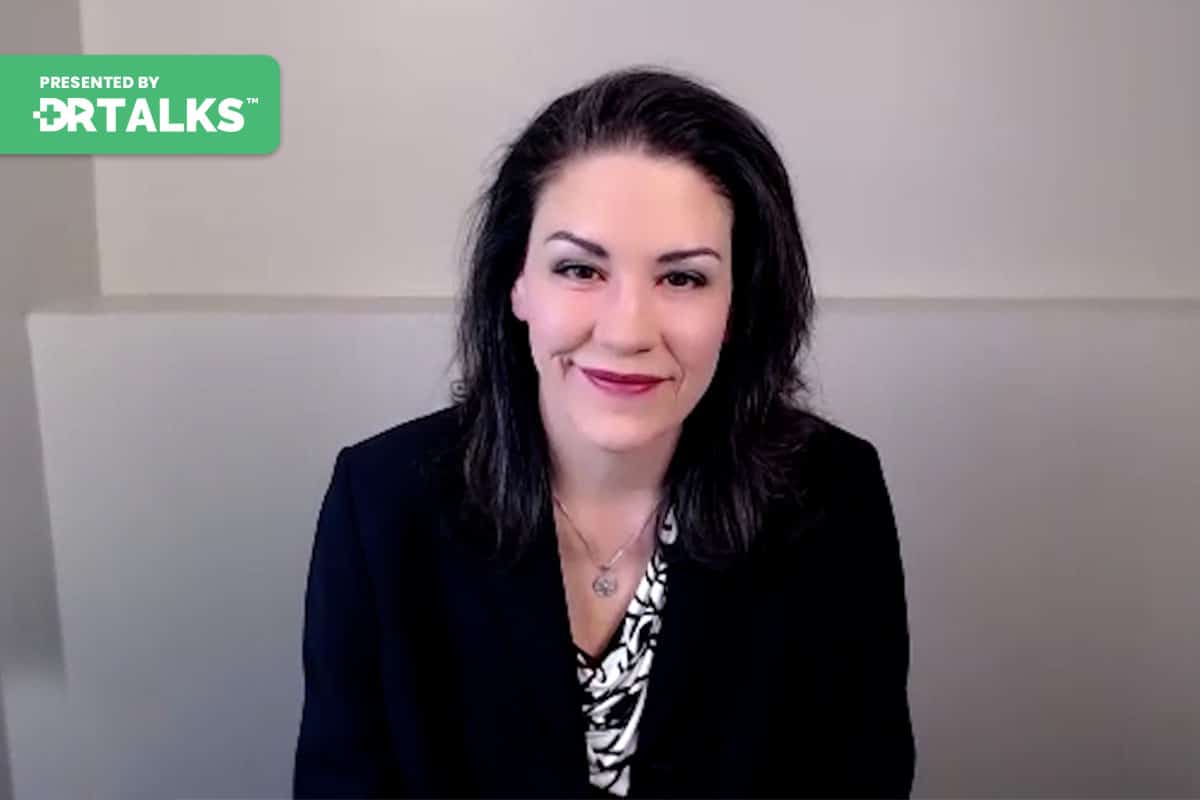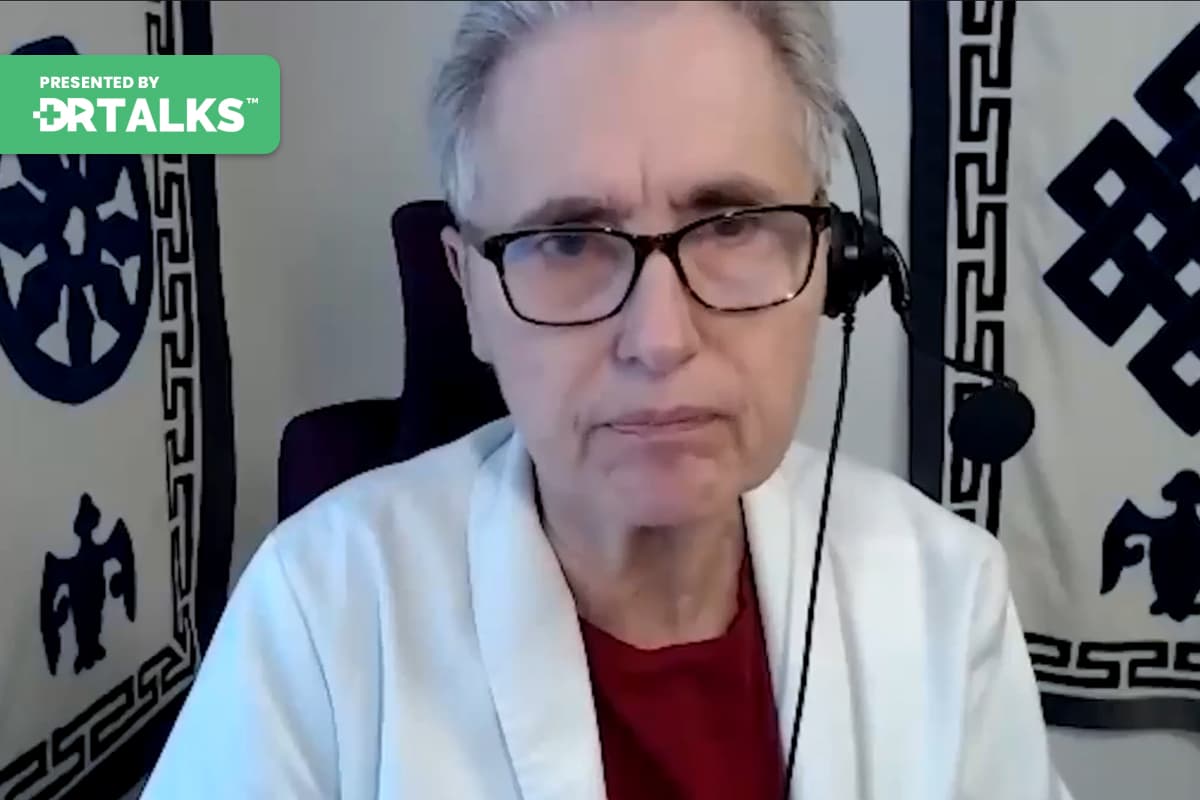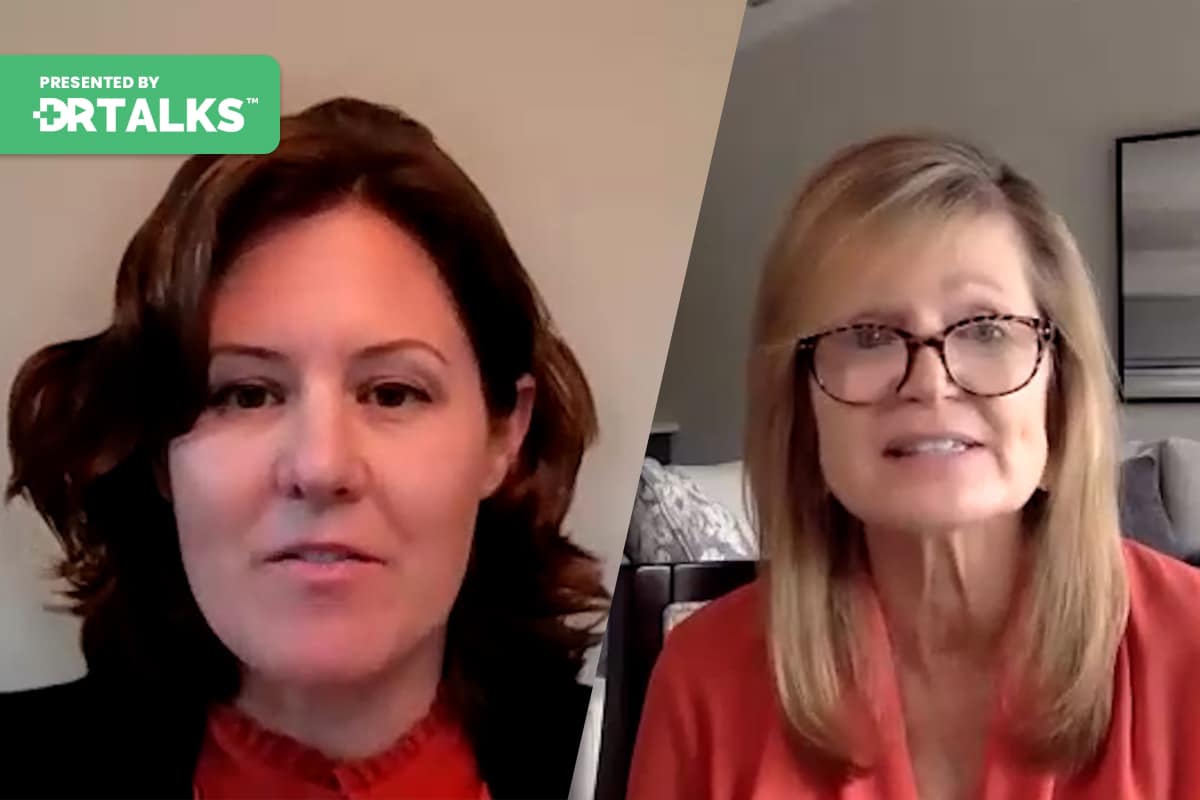Join the discussion below

Dr. Heather Sandison is the founder of Solcere Health Clinic and Marama, the first residential care facility for the elderly of its kind. At Solcere, Dr. Sandison and her team of doctors and health coaches focus primarily on supporting patients looking to optimize cognitive function, prevent mental decline, and reverse... Read More
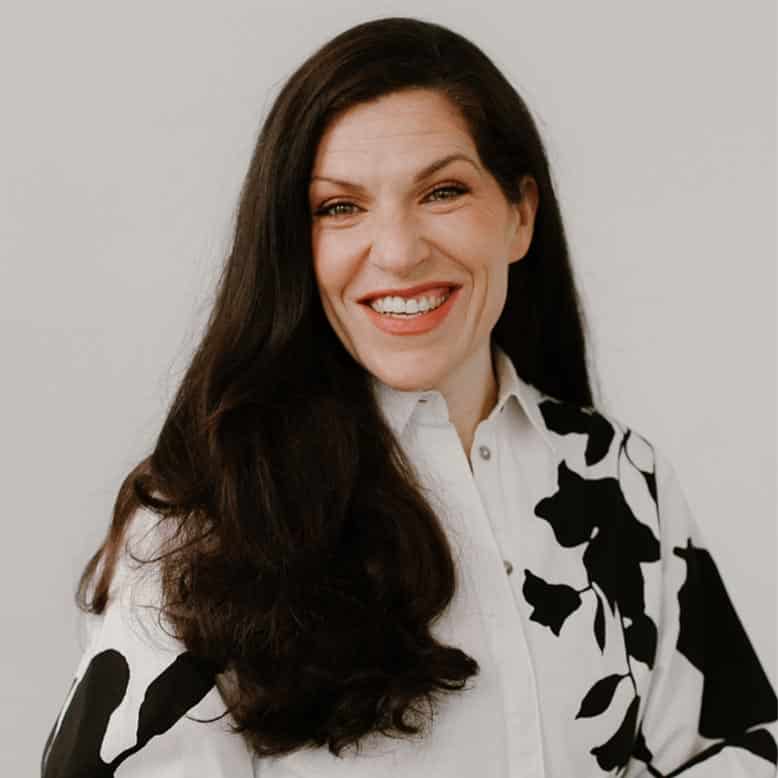
Dr. Christine Schaffner is a board-certified Naturopathic Doctor who has helped thousands of people recover from chronic or complex illnesses. Through online summits, her Spectrum of Health podcast, network of Immanence Health clinics, and renowned online programs, Dr. Schaffner goes beyond biological medicine, pulling from all systems of medicine and... Read More
Dr. Christine Schaffner explains that detoxifying our brains is essential for improving cognitive health and our overall well-being
- When we think about the brain, we think about blood flow going into it, but we should also think of blood flow going out, too
- Learn about the glymphatic system that is in our brain
- Understand how deep and REM sleep allow our brains to move lymph and remove waste from itself
Heather Sandison, ND
Welcome to this episode of the Reverse Alzheimer’s Summit. I’m so excited to introduce you to my friend Dr. Christine Schaffner. She is skilled in so many diverse skill sets. She has trained with Dr. Klinghart and many other legends in the field. She has created products. She is the host of many of her own summits, and she has also created some phenomenal online programs, where she goes into biological medicine and pulls from all of the systems of medicine and healing modalities, helping patients to reclaim their wellness and reveal their brightest light. Dr. Schaffner, thank you so much for joining us.
Christine Schaffner, ND
Thank you so much. It is always so lovely to connect with you.
Heather Sandison, ND
You as well. So one of the big things that certainly I focus on in my clinical practice, we both are naturopaths, we are colleagues in that, and in fact, had some of the same teachers that last year. And this detox process was really one of the foundations of our training. And it is completely absent in the conventional medical world. You kind of, you say detox and conventional MDs kind of roll their eyes and yet we see how big of an impact it makes on health generally. But it particularly on cognitive decline. So can you just explain a little bit about how the brain specifically detoxifies?
Christine Schaffner, ND
Yeah, absolutely. And you know, I love our naturopathic roots and that we are always coming from this place that, when there is any state of imbalance it is up for us to be detectives. To kind of remove those obstacles so the body knows what it knows how to do best and that is to heal. And I think we’ve gone about that a lot in this modern life that we have this amazing capacity to regenerate, repair and heal. We just have to get those boulders out of the way. And when we look at the brain, I was so excited when I found out about the glymphatic system and this was something newly discovered in 2015. And that gives you even like shed some light. You know, here we are recording this in 2023 and we are still figuring out about the body and the brain. And the brain is still, I think a vast frontier that we still have so much to learn about it. But when I learned about the glymphatic system, I thought even conventional doctors would start screaming about the importance, because it just made so much sense to me with our training, of course. That we have this amazing network of glymphatic that drain our brains at night to keep our brains healthy from normal metabolic waste and all the things of everyday life. And the onslaught of toxicity that we know is at the root of cognitive decline. We know it is one of the foundational elements that is keeping our brains sick is the modern build-up of cumulative stress of heavy metals from aluminum and mercury and lead and arsenic to microplastics now that are in every ounce of our being into electrosmog that is affecting our pineal gland and our neuronal communication to glyphosate and herbicides and pesticides.
And we could go on and on and on. And we have to think like we are here on the planet now. This is our life and hopefully, we can change this for future generations. And I am an optimist, but we have to really live a lifestyle of detoxification. And the glymphatic system, especially when we are thinking about preventing cognitive decline and reversing cognitive decline and Alzheimer’s. We absolutely have to have an understanding framework and ways to optimize the drainage, which I’m happy to break down for us. But yeah, I think whenever you are treating the brain, you have to think about the glymphatic system.
Heather Sandison, ND
And so what does it do exactly?
Christine Schaffner, ND
Yeah, that is a great question. So the glymphatic system stands for the glial-dependent lymphatic system. Again, this is new, right? We thought the brain was like behind this blood-brain barrier in this great wall in China and there was no lymphatics or immune activity in the brain which is behind us now with our knowledge. And so these glial cells, specifically astrocytes, and astrocytes, you can kind of picture this kind of star-shaped supportive immune cell that its job is to really take out the garbage in the brain. And what the astrocytes do are, they form this beautiful network of connection and what this network looks like is at the end of these star-like projections there are what we call aquaporin channels. And the aquaporin channels regulate the flow of fluid that bathes our neurons, bringing nutrition and oxygen, and all the vital things for life to the neurons and most importantly, remove wastes.
So normal metabolic waste, we know there is research around amyloid-beta. Also, there is research on all the things that kind of get into the brain that they shared. So there is research on viruses that helps to clear out aluminum or other metals, and other pathogens. So at night our brains actually shrink, it is 60% in size, especially during REM sleep also in deep. But in REM sleep is the time in the brain that our bodies are paralyzed. But we have this really high metabolic activity, our heart rates going up, our blood pressure’s up and there is this influx of blood. And also, along with the blood is the cerebral spinal fluid. So the brain shrinks and just rushes through our brain and brings all this beautiful oxygen-rich nutrition and then removes waste. And then it gets shut out, out of the brain along the veins. So along the venous system and the jugular veins in the neck, there is also kind of a highway right in the middle of the head if you can think about it. And there is a lot of drainage that happens through what we call the cribriform plate, through the olfactory system. So that like kind of if you take a cross-section of your head, it would be right in the middle there, like where your nose is. And then it goes and drains through the tonsillar ring, the Waldeyer’s Ring of glymphatic tissue, and then the lymph gets recycled. It is kind of all the lymph makes its way back to the thoracic duct which is on the left side of the body around the clavicle where the lymph goes back into circulation. And then the right side of the head, and the right arm, and the right upper torso are on the right lymphatic duct.
So we have this movement of bathing the brain at night again, that is heightened at night. Most active during REM. And we know when we don’t get a good night’s sleep we feel crummy, we feel slow, we feel kind of groggy and we feel that our memories might be harder to recall. We feel like we are maybe emotionally more labile. There are a lot of things we feel when we don’t get a good night’s sleep. And my understanding, at least at this time of the lymphatic system, is that we are not getting optimal self-cleansing of the brain when we don’t have optimal sleep.
Heather Sandison, ND
So sleep is a super important way to support this system. And it is almost like you are like rinsing your brain, right? you are getting out the toxins that maybe you were exposed to that day because you smell of air freshener or you drove on the freeway and there were petrochemicals or something. Or maybe it is just that every cell, eats and poops and accumulates some degree of metabolic waste that we need to be able to get rid of. You also mentioned amyloid plaques and we’ve seen in the literature that even people in their twenties, thirties, and forties accumulate amyloid plaque at a higher rate when they’re sleep deprived. And so in just one night, this can happen. And so we can see how over time that can lead to Alzheimer’s and dementia so sleep is critically important. I love the kind of two-part question. One, what do we do to enhance our sleep and make sure we are getting that really optimal sleep because not all sleep is created equal? And then two, is there anything we can do outside of sleep that could also be supportive of the glymphatic system?
Christine Schaffner, ND
Yeah, great questions. Everyone’s walking around with some sleep-tracking device now between the Aura, and the Garmin, and this and that. And there is a way to disconnect that from being actively connected to Bluetooth while you sleep and still get that information but we get so much. I have been getting even more information than I ever have since I learned about sleep. And what’s wonderful, it gives us that biofeedback right away. So if you have any insomnia or you are struggling with cognitive decline or you want to prevent or reverse Alzheimer’s, I would highly encourage that you get an Aura type ring to help support the good decisions that you are making to improve your sleep. And so one of these sleep tracking devices really kind of give you a grade, like how many, how long was your deep sleep? How long was your REM sleep? How many REM cycles you’ve had? They also look at your heart rate variability to look at how engaged your parasympathetic nervous system is, which is the healing state of the body. And it also looks at oxygenation, sleep apnea. there is a whole other conversation we can have and how that is so detrimental to the brain. So, we want to make sure we are getting that three to four cycles of REM every night. And so that is going to be, everyone’s going to have their unique kind of sleep, blueprint, right? And so we want to kind of see where your baseline is and then kind of optimize that. So I have tons of tools in my tool kit because I am from that understanding in that it is like we tell people they need to sleep and part of the reason why they’re sick is all the factors that are preventing them from also sleeping. So it is kind of the chicken or the egg.
So we have to kind of look at this multifactorial. So we start often with the pineal gland. How do we know to optimize the pineal gland production of melatonin? So a lot of sleep hygiene principles. So turn off your blue light two hours before bed, and have red light surrounding you. I have to work usually after I put my daughter to bed and I have daylight rays true dark white bulb that creates the right environment. I use my red light so I’m bathing in that red light before bed and that actually, once you are used to that, you turn on a regular light, it is like, you feel like you have been assaulted because it is the difference in the feeling before bedtime. So that helps you to wind down and so we have to have some type of light hygiene and electromagnetic field hygiene. I mean, I can give a whole lecture on how that can impact sleep.
So we try to focus on our sleeping location because we live again in the soup and we can only do so much. And so if you can take all your electronics outside of your bedroom, make sure nothing’s plugged in the bedroom because that is just having something plugged in more concrete of field. In mitigating dirty light electricity that is a whole thing that you can do using filters through the Stetzer or Greenwave in seeing if there is dirty electricity which is spikes and surges. But then the kind of electrical wiring of the home and that actually can be very disruptive to the brain, so that is important. Turning off your Wi-Fi router at night. And if you are really struggling with a neurological illness, I would even encourage you to try to get your home grounded and corded and not have Wi-fi.
We just know that it depletes melatonin and glutathione and all the things that we need to heal. So those are some quick sleep hygiene things. And then, I’m a big believer even as a naturopath of using melatonin. And melatonin in a liposomal form, as well as transdermal and suppository, and even high doses can be quite therapeutic for the body. So I feel that again because our pineal glands are affected by fluoride and glyphosate and aluminum and EMF. We just live in a melatonin deficient time and kind of the pros outweigh the cons of any potential negative feedback loop. Because we need pineal melatonin, our mitochondria need melatonin, our gut microbiome. And there are so many assaults to all those categories that I think the body can withstand a therapeutic dose, especially when you are recovering. So, I usually start people off with a liposomal and they’ll take anywhere from 12 to 30 milligrams. And then if we are really trying to clear their brain from toxicity, because again, the melatonin helps with circadian rhythm, but it also assists with the lymphatic system for detoxing the brain. So we will use that in either, like 50 to 400 milligrams of suppository. Yeah, do that with a provider. I know. I was really nervous in the beginning when I tried that, I was like, my God, people are going to feel horrible. But when it is the right thing at the right time, people really feel good from it. So I use a lot of melatonin and then we love GABA. So GABA, I created a cream with Marco Ruggiero called Somnium and we use the GABA to not only have an inhibitory effect on the brain and calm the brain down. Our pineal gland uses GABA. GABA actually helps to balance noradrenaline if people are high-stress and traumatized. They have a hard time entering from deep sleep into REM sleep and that kind of barrier is this high noradrenaline.
So GABA can kind of lower the noradrenaline to get optimal REM sleep. And REM sleep is the only time the brain is literally devoid of noradrenaline. So we kind of need that time to reset and heal our traumas. It is a really restorative time for the limbic system as well. So GABA is such a great tool and mast cells have GABA receptors. The more you read about melatonin and GABA it is like, unless there is something wildly wrong. Most people do really well with it and tolerate that. So, those are kind of my first go to sleep. And then again, we are always thinking about how to detoxify the pineal gland from those assaults that I shared. And so living the lifestyle of detoxification that we can, of course, go into more depth. And then I look at also the brain microbiome which is again, there is more and more awareness and more and more research to show that we have microbiomes everywhere. We just have to accept that, right? So I know in the Alzheimer’s research they figured out like the herpes viruses. Especially the herpes simplex one is that the middle of the plaques, I believe I remember reading them.
Heather Sandison, ND
One and two both came up. And then P. Gingivalis , Lyme, Spirochetes. of course, COVID. Yeah. Are found in the plaques and tangles. It is really wild.
Christine Schaffner, ND
Fascinating. So, I think even like amyloid beta, right? Is an antimicrobial peptide.
Heather Sandison, ND
100%.
Christine Schaffner, ND
So it is just like this, again, the body is wise. We have to just hear it from that wisdom. And so I treat a lot of Lyme and co-infections so that obviously can have a huge neurological impact and impacts sleep and are transmitters and all the things. And as you mentioned, it is like the bucket, now long COVID, and COVID viruses and retroviruses, parasitic infections, mold, all of that. So we look at that microbiome and often not only like this kind of neuroinflammatory kind of piece that can help quiet the brain for sleep but also antimicrobials or antivirals, etc… Can actually help the people sleep better, like five minutes and Alpha One or Liposomal cocktails. Even I’m a naturopath so I don’t use Valtrex at times but I have seen even Valtrex even help people sleep. It is kind of a different thought. And you mentioned, okay, we have the sleep component. And then how do we optimize the glymphatic drainage? In the lymphatic system kind of principle of the lymphatic system, it is an interconnected body wide network.
And where there is stagnation in one area, that can affect pooling and stagnation and another area. So we really want to tender a whole system in order for our brain to drain. And the most obvious place to start is the cervical lymph node. So if these are congested with Chronic Bartonella, Epstein Barr, and Mercury in your mouth and all those things. that is going to be like a traffic jam for the lymph to come out of your brain and so then that can create pooling. And my friend Marco, who I mentioned, who helps me create my products. He even studied the brains of children with autism. So different than Alzheimer’s but you can see a lot of the research they study Alzheimer’s and autism a lot and it is just kind of different stages of life, but very similar common denominators. They studied them and they found through ultrasound that there was more pooling of fluid in children who had autism. And when they drained the cervical lymph nodes with actual ultrasound the brain glymphatic fluid decreased.
And so that was kind of the brainchild of us creating lymph flow. Which is if you decrease the lymph congestion in the neck the lymph has somewhere to go and then just kind of think upstream. Okay. Do you have chronic sinus issues? You got to tackle that. Do you have chronic tonsil issues? You got to tackle that. You got chronic dental issues that, tackle that. And then you just scan your body. Do you have breast implants? Do you have scars? Do you have other implants? Do you have a chronically swollen belly? Then that is probably a lot of pooling of lymph congestion. Do you have, you don’t even have to have Edema but you have pain or cellulite or just fluid, and poor circulation in different areas. And that is a little window into you might have lymph stagnation downstream. And again, the whole, brain is not this in isolation? It is connected to the whole body. So we have to think about the glymphatic system in relationship to the whole body’s lymph as well.
Heather Sandison, ND
Really helpful. So what about, I was just talking to somebody else today about the vibration plate. Would that be a strategy as well?
Christine Schaffner, ND
Yeah, yeah. The vibration plates are awesome. There are, when I was at the biohacking conference, it was kind of fun. They were like walking people through you can stand on one, which is great, but with caution and then with guidance, especially if you are needing support. You can put different body parts on vibration plates and that is really helpful. I just, my friend just created this little wand that you can use on your face. It is like a handheld vibration tool and that really helps to move the lymph. So that is really awesome. So we’ve been really loving that. So yeah, vibration plates, dry skin brushing, those even like jade, gua sha can be really helpful. A lot of the things that people do cosmetically actually helps your brain health. When you think about it like LED light. I mean aside from all the toxic stuff but like LED light and lymph facial. Sometimes you get people to really do that stuff for cosmetic reasons and then they’re like.
Heather Sandison, ND
The side effect is that my cognition is better.
Christine Schaffner, ND
Yeah. Totally. I think there is something in there. So yeah, there are a lot of home things and you know most of my patients, I mean, I want to empower them with home tools because this is like a day in and day out. Of course, we have lymph therapists, we have awesome length equipment, and we have all sorts of things to do neuro therapy. We do all the stuff in the office to get people’s lymphs moving but the real healing happens at home.
Heather Sandison, ND
Yeah. So I want to double-click on the sinus conversation and we can even go into tonsils and dental too, because you mentioned all of those and it makes a lot of sense. It is the anatomy. It is the geography of our head, our brain, and our bodies that these things are very close to the brain. And so there are pathways like you describe the cribiform plate and the olfactory nerve that runs straight from the nose up into the brain. And then also the teeth are connected. The jaw is connected to the sinuses, and the sinuses are then connected to the brain through that cribiform plate. So all of these things are connected very directly. Let’s talk through some of the pitfalls that people run into there.
Christine Schaffner, ND
Yeah, absolutely. So, just stating aside, I had a personal experience where I had a benign tumor in my pituitary. And how the surgeons went, as they went through my nose. And they opened up my sphenoid sinus and then opened up my sella turcica and took out. And God bless them, people who know how to do this. Not to gross anyone out but I’m just trying to share if you had any doubt about the proximity of your sinuses to your brain. I’m walking in, telling you there is a complete connection. So we want to tend to the microbiome. So the nasal microbiota, even Bredesen, he’s type three Inhaled Alzheimer’s. That when people are in mold environments, you get colonization and dysbiosis in your sinuses, and that can produce biotoxins. That travels up to the brain and keeps the brain in this kind of chronically inflamed state. So that is really important. So we do lots of sinus irrigation, my good friend, Dr. Greg Eckel. He created a sinus spray called Clear Mind. that is like HOCL, DMSO, frankincense, and rose. We love that. We love propolis and different combinations of herbs and silver and you name it, we’ve put it up it. Nose knows, right? And just to get that irrigated. The ozone, we’ll do a lot of the sinus ozone for people who just don’t want to breathe in.
And so the sinuses are important in that way. I think you just really want to balance the microbiome. And then also on the flip side, it is also an entryway into the brain. So if we are trying to get a therapeutic effect in the brain, often doing a nasal spray is a really great way to deliver that. So NAD or what have you, we can put in the sinuses to actually help whatever we are trying to do in the brain. So, those would be the big ones that I think about when clearing the sinuses. Obviously, COVID has had a huge effect on people’s olfactory bulbs. And I have read some research too, especially in long haulers. The virus can be gone but it is the immune inflammation that lingers that has created the lack of smell. So really kind of helping to disinflame, in the, by modulating the immune system in that area and also rebooting the mitochondria. And that tissue usually helps to regain one’s smell over time.
Heather Sandison, ND
Well, and then tonsils and dental.
Christine Schaffner, ND
Yeah, the tonsils were big. I feel like I kind of a broken record. Most of my patients have what we call tonsil interference fields and bioregulatory medicine. And this is where the ring of lymphatic tissue often, I ask people, did they have chronic strep when they were younger. And mono or Epstein-Barr? Do they ever get those tonsil stones? Do they get these sick, sore throats or not? You can have over-exaggeration of inflammation and also what we call anergy, a lack of a response in that tissue. And both are not good. Usually, it is kind of clonal to people. And so if we have all those things, Dr. Vojdani, who owns Cyrex Labs or who works for it. I don’t know if he owns it, but he shared this great paper. That showed when people have chronic strep that can be like the PANS, PANDAS people. On the tonsils that is an entryway to the brain for especially Th17 cells. Th17 cells are the immune cell that you want but you don’t want to be perpetually prolonged. You want it to do its job and then to retreat and come down. And when you have prolonged entry of these cells into the brain and that can create a lot of neurons or microglia activation. So he was like, he kind of had an aha moment for me when I read that. So we do a lot, and the scars can also create facial constriction in that area and can infect lymph drainage. So we do a lot of lymph drainage here to open up the neck and the tonsils. Propolis sprays are like propolis, different ozonated oil, oil washes, or oil pooling you can do and then just gargle with it. So we are often looking at the sinuses and tonsils when we are opening up the lymphatics and then definitely the dental. If you have a cognitive decline or Alzheimer’s or anything of that nature, please, please, please, like work with a biological dentist with a great functional naturopathic medicine doctor. Because if you have mercury in your mouth, which is still I mean, we still have to educate about that.
There are, some people who walk into my office with amalgams and they have tried everything and I am like, let us start there. So, amalgams definitely, are an amalgamation of different metals, primarily silver, and mercury. Mercury is a known neurotoxin that actually settles into the brain. And so can travel through the cranial nerves into the brain. And there are lots of studies on the effect of astrocytes on the glial cells to clean up the brain. Also just neurons in general. So it is going to lead to cell death eventually, so that is the news there. And so we don’t want that. Right?
And so so removing those and then doing a healthy, supportive kind of lifestyle detoxification for the mercury. And then we look at root canals because root canals can be dead teeth and then they can be a haven for bacteria and spirochetes. So the oral microbiome, we know there are studies to show that the oral microbiome has a lot to do with our brain, and of course, our heart and everything. So that is important. And then we look for the little pockets of infection in the cavitation and wisdom teeth area that can also be full of Bartonella to Lyme and co-infections to HPV to what have you. And then that can be that chronic poisoning to the vagus nerve so that effect, dysautonomia, like lots of vagus nerve symptoms as well as from a meridian standpoint and small intestine circulation and endocrine system. So when people have a lot of heart stuff, I’ll always look at the wisdom tooth area and that can surprisingly clear that up.
Heather Sandison, ND
This whole world is a little foreign to a lot of people, right? If you just go into your dentist and say, hey, do I have cavities where my wisdom tooth is taken out, or is it possible that my root canal is the home for dangerous bacteria? You might not always get an affirmative. So how do you suggest people sort of navigate these differences in opinion in the dental world? We’ll start there.
Christine Schaffner, ND
Yeah, great question because you could, everything I have said right now you can find somebody to, like totally poo poo everything I have just said. You know what I mean? And that is a conflict, right? This paradigm, like we are changing the paradigm, right? And so there are going to still be people in the old way, which there is still value in conventional medicine. I had neurosurgery, so I’m not blind to that. But it is like when we are in these chronically ill kind of like gray areas of medicine. I feel like where you have to shift the paradigm to look at all these factors that I have talked about. And so I think you have to educate yourself first. You have to feel empowered because you can be swayed easily, especially if you are on the fence. there are going to be people who easily tell you, don’t do that, where, whatever. And then there are going to be people who tell you the opposite. So you have to get really strong in your spirit and your intuition. And then if you are like, okay, I have educated myself, this feels true to me, then I would really work with a trusted biologic or dentist. And biological dentists are not created equal but they are usually savvy and kind of like some really do mercury amalgam removal well. Some do root canal extraction well. Some do cavitation well. So you want to go for the dentist that is really an expert in those areas and really around the city or start around the root canals and decapitations.
What we do, I kind of like keep people up and refer them, and then I have to have the dentist back diagnosed. And so they do what I call, what it is called a Cone Beam CT scan. It is lower radiation than a normal C.T., but it does a 3D image of the whole jaw so it can look 3D and see if there are pockets of infection that would not be seen on a 2D film. And even that is not perfect. So there are trusted dentists who’ve done this for so long that they have enough information to go in there and see and most times they are met with maybe more than what is visible in a film. So I guess really do educate yourself on the international, I forget what it stands for, IOMT those are the dentists that get trained and safe mercury amalgam removal. And then there is anything like there is the Naturopaths and then there is like specialties. And so there is a beautiful network of these dentists but you have to seek them out.
Heather Sandison, ND
Right. It is the International Academy of Oral Medicine and Toxicology. Yes, thank you. I was trying to remember. Yeah, I was trying to remember the acronym. Even so, you had me there. Thank you. Dr. Schaffner, this is such a wonderful conversation. And I know so enlightening for so many people and so many people struggling with chronic disease in general who feel stuck and like they’re not getting answers. This is such a ray of hope and really something I would highly encourage people to look into these pieces around that, especially if it is new to you around biological dentistry and what a huge impact that can have on your brain and your cognition. So, Christine, again, thank you so much for being here. Tell us how we can find out more about you. You have these phenomenal, amazing products. I have been taking them myself. So tell everyone how they can find the products. And also you mentioned you see patients so where they can maybe learn more about working with you.
Christine Schaffner, ND
Thank you so much, Heather, and thank you for having me on the summit. I have a clinic. It is called Eminence Health with an I. I’m in Seattle, Washington. Eminence means the divine with it. And I didn’t know what it meant. And I got the download and then I was like that fits. That is all about. We do it in person, we have a whole array of tools and treatments, and therapies here. And we also do telemedicine depending on what state you are in. So we’d be happy to support you in any way. And then I have a website where we sell our supplements, and that is ipothecarystore.com like apothecary but with an I. And so you can find some of the solutions that we mentioned. And then I also have a podcast, it is on the website drchristineschaffner.com and we’ll have to connect on the podcast, Heather. And so that is just kind of my way of just sharing kind of things that I’m most excited about and want people to learn before they might get to you and in your treatment plan.
Heather Sandison, ND
So I love it. Thank you so, so, so much for your time. It is always a pleasure connecting with you and really a privilege to have you here. Thank you.
Christine Schaffner, ND
Thank you so much.
Downloads
